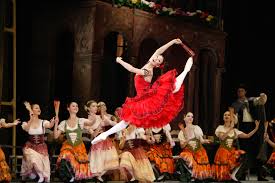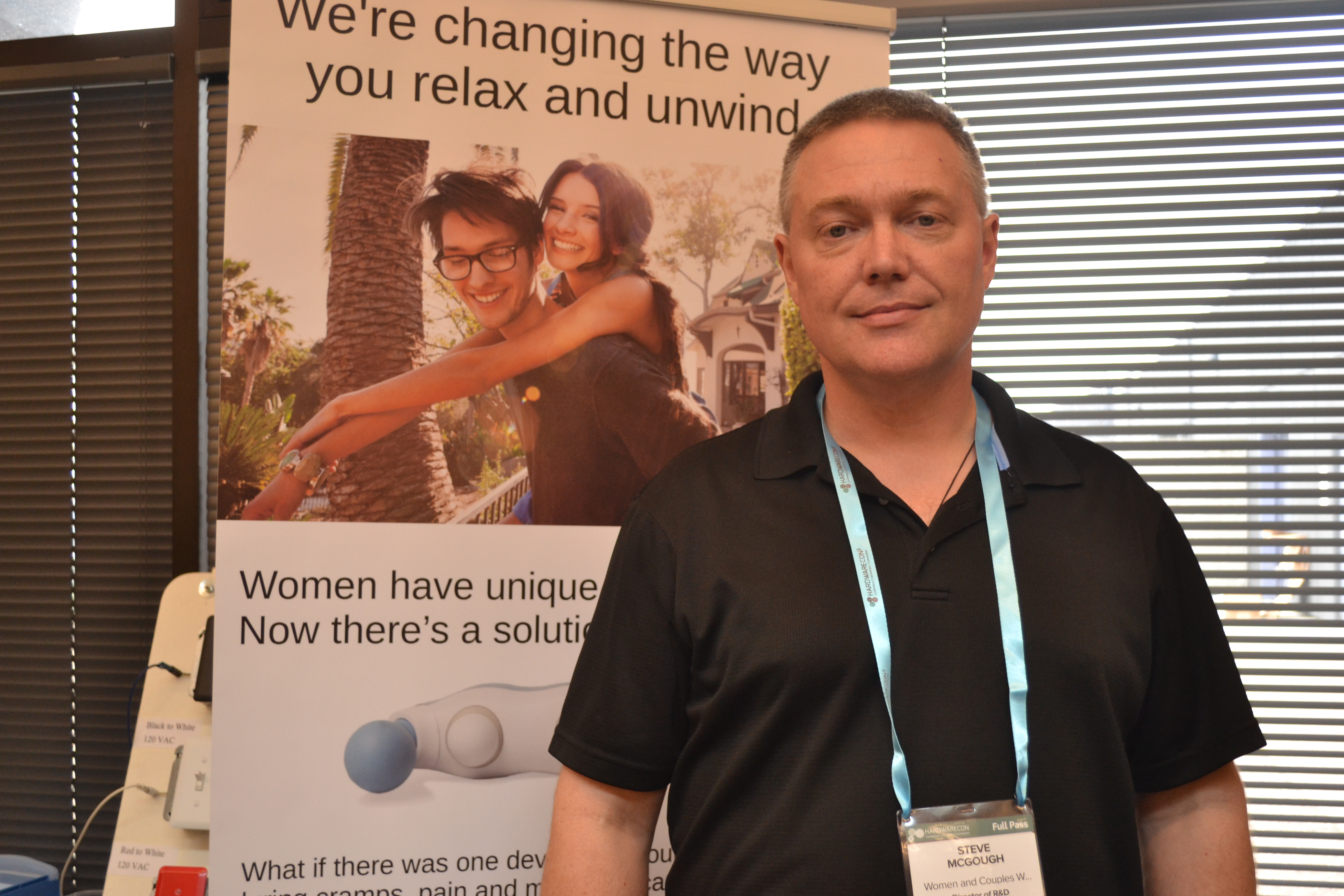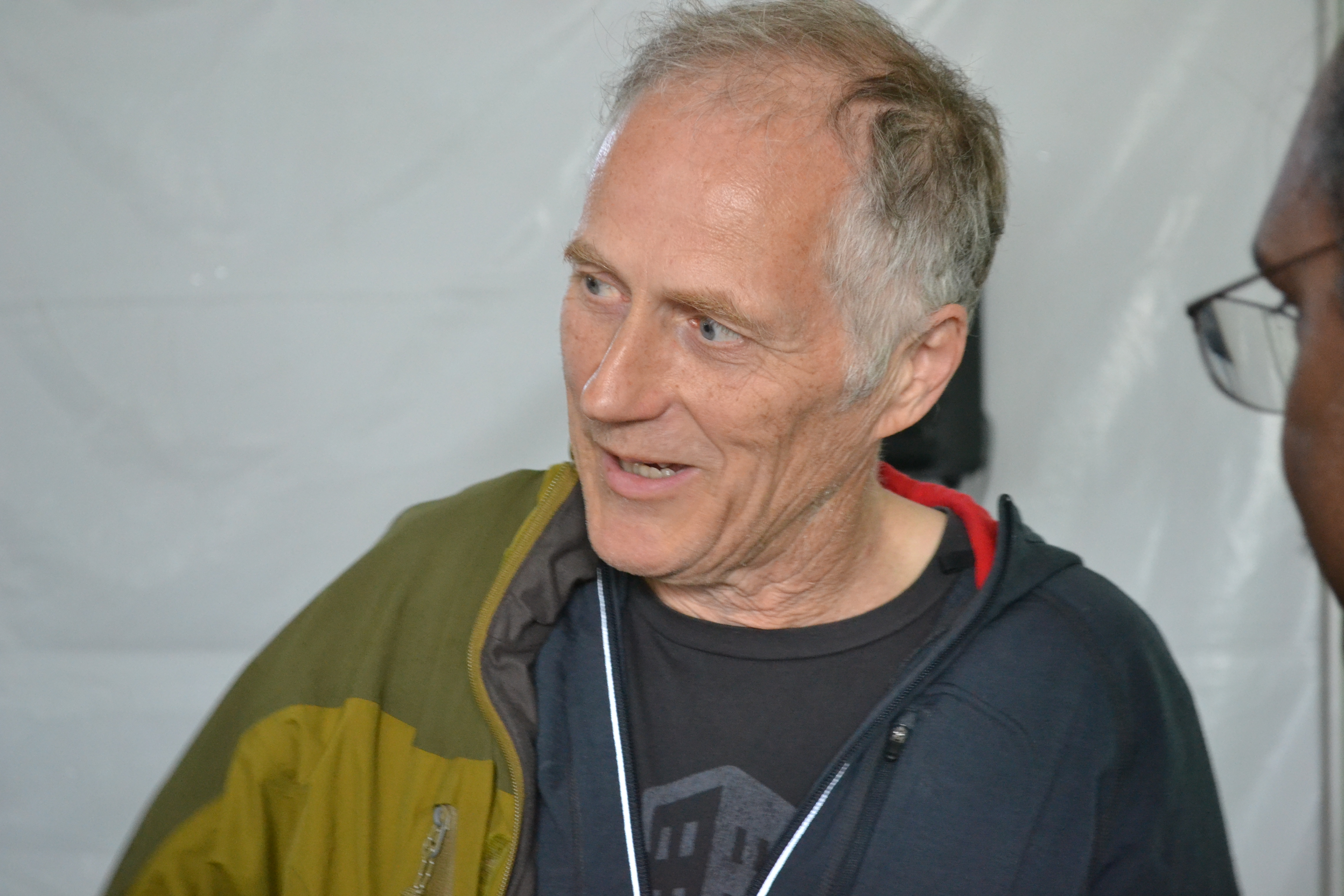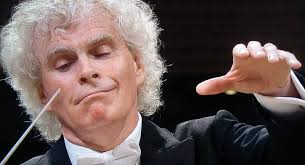
by Lidia Paulinska | Apr 24, 2016
April, Fathom events – Arthur C. Clark, the renowned English physicist and science fiction novelist, once wrote: “Any sufficiently advanced technology is indistinguishable from magic” (Profiles of the Future, 1961), and this prescient observation is nowhere more apparent than today, 55 years later, with the phenomenal bursting forth of the Digital Age that has swept the globe over the past couple of decades and has impacted almost every aspect of our daily existence. Within this relatively brief period of time, digital technology has profoundly and irreversibly changed our lives … forever! We only have to ask ourselves, has our day-to-day routine been altered significantly by our smart phones, the internet, GPS, Hi-Definition TV & cinema , the inevitability of self-driving cars, or any of the other thousands of data tech innovations that pervade the very essence of our culture? I suspect most of us would unhesitatingly respond with a resounding “Yes, absolutely! “
You may justifiably ask, “What does all this have to do with Don Quixote?”, the venerable Russian ballet which was first performed in 1869 by the Ballet of the Imperial Bolshoi Theatre in Moscow? Well, the current production of the enduring “Don”, viewed live for one night only on April 10, 2016, has been seen by thousands of people in hundreds of theatres throughout the world on giant Hi Definition digital cinema screens (Pathe´ shot for the big screen with 5.1 sound and 10 HD cameras creating up-close and vivid pictures 3-times the definition of 1080p TV!) and is essentially based (with considerable variation) on the same work choreographed 147 years ago in Moscow by the great Marius Petipa (1818-1910).*
What does the Data Revolution have to do with a 147 year old Russian ballet? That question was answered for me the evening of April 10th in my local movie theatre.
Pass the popcorn!
Thanks to transformational digital technology which has forever changed our lives with smart phones, the internet, emails, Facebook, etc., more people viewed the Bolshoi’s Don Quixote the one evening of April 10th than had ever seen it in the past 147 years of it’s existence! And if that’s not revolutionary, I don’t know what is! In 1776 when the Bolshoi was founded, for example, it could take six weeks to send a letter by square rigger across the Atlantic from London to New York. Now we communicate with people on the other side of the planet or even circling the earth in space stations in milliseconds, one thousandth of a second, which is almost “indistinguishable from magic.”
Today’s Don Quixote by the Bolshoi resembles Cervantes’ novel in name only, with the character of the Don only occasionally making rather awkward non-dancing appearances on stage, with the “heavy lifting” of the evening left almost exclusively to the very able chorus which is indicative of Alexander Gorsky’s** reworking of the Petipa original. Both Petipa and Gorsky continue to be credited with the choreography in the program notes, and Leon Minkus’ original score continues to thrill, but the ballet has once again been “updated” to suite the changing expectations and tastes of a modern audience by Alexei Fadeyechev, (Bolshoi artistic director,1998 – 2000), yet still retains all the grandeur, perfection of style and precision execution the Bolshoi has been known for in its celebrated 240 year history.
In 1917, Sergei Diaghilev, founder of the famed Ballets Russes, who transformed the world of ballet, ushering it into the modern age, issued a challenge to Jean Cocteau who had asked him what were his ideas regarding a ballet they were producing. Diaghilev famously replied, Etonne-moi!! … “Astonish me!!” and the result was the immortal Parade, produced by impresario Diaghilev, designed by Pablo Picasso, composed by Erik Satie, and set to a story by Cocteau.
It has been said that our digital world can only become more incredible over time, joining art and technology, in ways now unimaginable. “Magic?” Perhaps … “Astonishing?” Unquestionably!
Etonne-moi!!
* Marius Petipa’s Don Quixote was subsequently modified over the years by rival Bolshoi choreographer Alexander Gorsky who completely transformed the ballet in 1900, creating a version radically different from Petipa’s original which infuriated him, and Gorsky’s version continues to be a permanent part of the Bolshoi repertoire to this day. Petipa, who was born in Marseilles, France, is universally considered to be the single most influential ballet master and choreographer in ballet history.
** Alexander Gorsky (1871-1924) was a renowned Russian choreographer and a contemporary of Petipas’, both serving at the same time at the Bolshoi. However it was never an easy relationship. A quick check with Wikipedia reveals, “The largest change that Gorsky made to Petipa’s (Don Quixote) choreography was the action of the corps de ballet. Instead of being a moving background as the corps often was, they became an important part of the drama.” (Wikipedia … 2016 Apr 8, 02:33 UTC….)
Rather than being nothing more than a moving part of the scenery, with Gorsky’s restaging, they bustle around the stage, “…breaking the symmetry and lines typical of Patina.” Gorsky added an element of playful lightheartedness to the new-found dynamism and significance of the chorus, characteristic the Bolshoi’s productions of “the Don” to this day. Alexander Gorsky is known today for his restating of Petipa’s ballets which include Swan Lake, The Nutcracker, and of course, Don Quixote.
by Lidia Paulinska and Hugh McMahon

by Lidia Paulinska | Apr 11, 2016
Fathom events – Hailed by The New York Times as “A gorgeous cinematic spectacle,” and in continuation of their invaluable cultural service by offering stunning live filmed performances, Fathom Events presented Giacomo Puccini’s Madama Butterfly for a one night only screening on April 6, 2016 in over 700 movie theaters worldwide. It was truly an incomparable operatic and cinematographic event not to be missed!
Anthony Minghella’s* breathtaking production has delighted and thrilled audiences at the Met ever since it premiered in 2006. Soprano Kristine Opolais reprises her unanimously acclaimed performance in the title role opposite the extraordinary Roberto Alagna who masterfully portrays the American naval officer Pinkerton who abandons his delicate Japanese Butterfly and breaks her heart. Ms Opals was recently seen at the Met one month earlier in the title role of Puccini’s Manon Lescaut with Roberto Alagna in the role of her indomitably suitor des Grieux. That performance was also offered to movie-goers throughout the world compliments of Fathom Events.
Puccini’s Madama Butterfly had its world premiere in 1904 at Teatro alla Scala, Milan. It was initially received poorly, but after numerous revisions it became a much-lauded success and today it is one of the most celebrated operas in the world. Puccini was inspired to create his opera after seeing a one-act play in London in the summer of 1900 titled Madame Butterfly, produced by the American theatrical impresario David Belasco. Belasco in turn had based his play on a short story by an American writer of little note by the name of John Luther Long.
The opera premiered at the Metropolitan Opera in New York in 1907 with the composer in attendance and featured world-renowned tenor Enrico Caruso as Pinkerton. From that point onward, its popularity has never waned.
In addition to first-rate performances delivered by Ms Opals, Mr Alagna and the supporting cast and chorus, the simplicity of the production not only allows us to focus our attention on the performers without distraction, but also offers a milieu reminiscent of the austere minimalism of a Japanese Kabuki stage. Set Designer Michael Levine has created an unencumbered performance space, utilizing unadorned sliding framed fabric screens to indicate scene changes while upstage a broad staircase, extending the width of the massive Met stage, functions to herald significant entrances and exits.
Costumes by designer Han Feng, are traditional Kabuki in style, being grand and colorful when appropriate to character, and stand in bold contrast to an essentially bare stage. As in the Kabuki theatre, so too in this masterful production, our focus is drawn exclusively to the performers with appropriately minimalist production values in a subordinate yet supportive role.
The story is simple but the emotions run deep.
Captain Benjamin Franklin Pinkerton, an American sea captain who, while visiting Japan, marries Cio-Cio-San, a beautiful Geisha nicknamed “Madama Butterfly.” He departs for America (and here Puccini interpolates a couple of bars from “The Star-Spangled Banner” as he does in every Pinkerton scene) and doesn’t return until three years later. By this time Butterfly has given birth to their son and Pinkerton has remarried, this time to an American with whom he returns to Japan. In despair, Butterfly, who has been faithfully awaiting his return, hopefully watching every ship that arrives in Nagasaki Harbor, takes her own life and Pinkerton, in realizing his folly, collapses in abject grief.
An additional indigenous Japanese theatre form Minghella was inspired by was the ancient Bunraku, the puppet or “doll” theatre of Japan. In this production, the puppets are manipulated by traditional three puppeteers, all veiled in black, from San Francisco’s Blind Summit Theatre, appearing initially in Act I representing Cio-Cio-San’s servants. In the Second Act her young son is represented by a puppet of remarkable life-like quality, and in the final act, puppets dramatize the conflict between Butterfly and Pinkerton in a dream-like play-within-a-play sequence.
This wonderful Metropolitan Opera production by Minghella is now celebrating it’s tenth anniversary and one can easily understand why it’s one of the Met’s more popular offerings and why Puccini’s masterpiece continues to be an enduring staple of the operatic repertoire around the world.
*Anthony Minghella (1954-2008) was a renowned British film director, producer, playwright, and screenwriter. His much-celebrated The English Patient won 9 Academy Awards in 1996, followed by The Talented Mr Ripley which garnered an additional 5 Oscars. In 2003 he won another Oscar for Cold Mountain. Minghella was married to Carolyn Choa who masterfully directed and choreographed this current production of his magnificent “ Butterfly” . He died of cancer in 2008 at the age of 54.
By Lidia Paulinska and Hugh McMahon

by Lidia Paulinska | Apr 6, 2016
The author of the proverbial statement – Necessity is a mother of invention – is unknown. It is sometimes ascribed to Plato, the Greek philosopher who lived in Athens in the time 300 years BC. But even the quote is very old, the meaning is current. Difficult situations inspire ingenious solutions.
This is what happened to Steve McGough, founder of product named Hi that helps women and couple experience new way to relax and enjoy life. Since 2009 their unique technology has been refined and tested on over 2000 women. Today their method and technology has been patented in the US and Australia with patents pending in the EU and Canada. At the 2016 HardwareCon in San Leandro, California, Steve presented a lunch time keynote session and presented his soon to be on the market product to the crowd.
Heading back to his story of invention.
Steve discovered the technology behind “hi” when trying to help his wife Wendy find a way to relieve pain from a surgical adhesion. In 2007 he rushed his wife to a hospital for emergency C-section following 5 years of trying to have a child. Steve and his wife Wendy, then had their life take a dramatic turn. In the last few months of pregnancy, Wendy was exposed to an antibiotic resistant bacteria.
Their son lived for only one day. Wendy left with not only mental scars but also physical scars that were not healing quickly. Steve researched everything he could think of that might help with the physical issues, and finally he came up with an abdominal massage technique that helped reduced her pain. The method required continuous vigorous massage for 5-10 minutes. This wasn’t easy to maintain manually and he started to look for automated massage devices. He was unable to find anything that fit his needs, so as an engineer he designed it by himself. It took him about a year to design & build a unit that worked well.
But there came a surprise.
The side effect of massaging the abdominal was an orgasm. After Wendy noticed it some of women who volunteered to test the device, over their clothing, reported the same effect. Steve who previously worked in neuroscience research was looking for an answer. Talking in the role of an “IT guy”, as he describes himself, about something that is still taboo, especially in the southern portion of the US, wasn’t easy. He contacted investors and friends who repeatedly warned him to abandon the project “before it destroyed his reputation”. Instead he ended up going on journey across US, the Caribbean and Asia. After 7 years of research and refinement (testing on over 2000 women) he proved the effect and outcome to be true. Along the way, Steve became a professor of clinical sexology in San Francisco to better discuss the issue with an interested community.
To bring the product to market, he had to start the manufacturing process. Manufacturing for the large device is very expensive, typically $800K – $1M. He received the offers from adult entertainment & products related investment groups, but he knew that this new technology helps women relax in many ways far beyond sexual areas. Fortunately he met Greg Fisher, the CEO of Berkeley Sourcing Group, LLC who realized full potential of the product. His turn-key product development company finalized the designs and set up manufacture in Asia. Together with Greg, and his team of mostly female designers and engineers in China they created this version of hi that will be released in 2016.

by Lidia Paulinska | Apr 1, 2016
At the HardwareCon 2016 Tim O’Reilly, publisher entrepreneur, and the founder of O’Reilly Media, presented a map showing where technology is going and the role of enthusiasts who are passionate about new products and ideas.
Tim brought back the famous quote from Thomas Watson, the longtime CEO of IBM, who said in 1943 “I’ve seen no need for more than five computers in the whole world”. Watson’s misjudgment allowed other companies to enter the market for computers. Over time, this trend led to the entry of many smaller companies to the market and gave them an opportunity that IBM neglected. Today, startups continue to play the same role, especially in the IoT landscape.
Tim presented that the trend started in2000. At that time, the smartphones and tablets were entering the market and PCs were on a small stable increase. As the mobile devices proliferated, they rapidly took away growth and market share from the PC space. That was the marketplace until about 2014 when the smartphone and tablet growth became flat as the market approached saturation. . This market change has given an opportunity for huge numbers of devices in the “Internet of everything”. IoT is the new thing in the market with projected 35percent growth and will stay with that pace until 2019.
What’s next in computing?
O’Reilly stated three key trends on the horizon: small, cheap and ubiquitous hardware, the golden age of AI software, and software and hardware combining into new computer platforms.
Many entrepreneurs are taking their chances and hope to participate in these opportunities and define a new and large market segment with their products.

by Lidia Paulinska | Mar 29, 2016
On Saturday March 19, 2016, scores of fortunate movie-goers in hundreds of select theaters throughout the U.S. were treated to a one-day-only cinematic presentation by Fathom Events of ”Berlin Philharmonic: The Beethoven Project” featuring one of the world’s greatest conductors, Sir Simon Rattle, leading the incomparable Berlin Philharmonic, one of the world’s greatest orchestras.
Sir Simon has been the principal conductor of the Berlin Philharmonic since 2002 and prior to that, rose to international prominence as Music Director of the City of Birmingham Symphony Orchestra where he served for 18 years. After the expiration of his current contract in 2018 with the Berlin Philharmonic, Rattle will become Music Director of the London Symphony Orchestra. He is universally hailed as one of the greatest conductors of all time, and seeing him in action from our cinematic vantage point clearly confirmed that laudatory accolade.
The wonderful “up-close and personal” experience this filmed live performance afforded us, allowed a glimpse into Rattle’s very personal and intimate method of conducting — interacting with gesture and expressions of delight with each orchestra member — a wink here — a grin there — always reciprocated — always incredibly animated and dynamic … and always all-embracing. His love for his orchestra and what they are collectively creating informs and enhances every aspect of Beethoven’s genius.
“Berlin Philharmonic: The Beethoven Project” was divided into two parts, separated by a brief intermission.
Part I, “Living With Beethoven,” was a brilliantly informative documentary featuring on-the-spot backstage interviews with Rattle and members of the Philharmonic who explored the intricacies of Beethoven’s masterful symphonies and their approach to these masterpieces. One orchestra member for example claimed Beethoven demanded a lot of “”blowing, bowing, and banging,” whimsically reflecting on the vitality and power of the composer’s symphonies and the necessary creative effort it takes to reveal that power. Horns, fiddles and drums certainly, but most importantly, the musical genius to communicate what Beethoven was offering to all of us, and no group of musicians are better prepared to do that than the Berlin Philharmonic under the guidance of the legendary Sir Simon.
These candid interviews afforded us a wonderful introduction and understanding of the two complete symphonies that were to follow in Part II.
The first work on the program in the second half was the sunny and gracefully cheerful 4th Symphony in B-flat major. This popular piece in four movements is characterized by light instrumentation, not unlike that of Joseph Hayden with whom Beethoven had studied a decade earlier. Happily, in the documentary, Rattle’s piano demo of the adagio (“slow movement”) in the symphony’s intro to the first movement perfectly prepared us for what was to come.
Beethoven composed his 4th Symphony in the summer of 1808 and dedicated it to Count Franz von Oppersdorff who had incidentally offered him a great deal of money to compose a new symphony for him. Beethoven completed piece in one short month proving that cash is a great motivator … even among geniuses.
The second piece offered in Part II was one Beethoven claimed to be one of his best works: the 7th Symphony in A major which premiered in Vienna in 1813. He composed this work while recuperating at a spa in Teplice and dedicated it to his host, Count Moritz von Fries.
The second movement of the 7th, the allegretto (“a little lively”), is so enormously popular, it is often performed separately; it is known for it’s use of dance-like rhythms with a reliance on the string section, backed up by clarinets.
Overall it was memorable event. Too valuable to miss.
by Lidia Paulinska and Hugh McMahon




